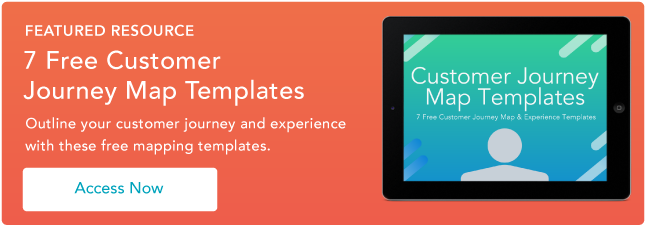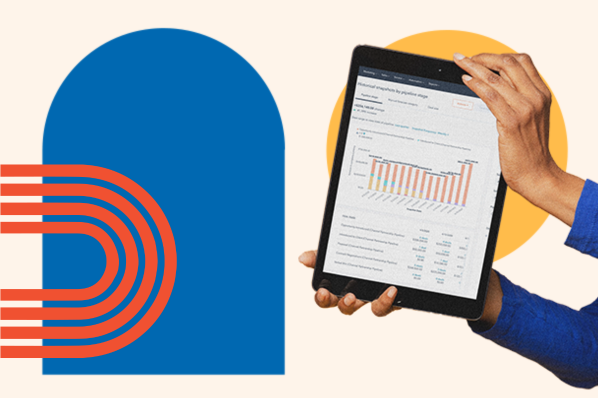Which one is best for your team? Let's go over the key differences between CDPs and MDM to help you determine which one best suits your team's business goals.
Table of Contents
Customer Data Platform vs. Master Data Management
When you're seeking a way to better collect and understand data, you may consider a few options. Two of those options include a Customer Data Platform or Master Data Management.
Choosing between these two systems depends on what your organization needs for marketing, sales, and business efforts. But first, let's define what these terms mean:
-
A Customer Data Platform (CDP) is software that aggregates and organizes customer data across multiple touch points. CDPs then unify data into centralized customer profiles to improve marketing efforts and the customer experience.
-
Master Data Management (MDM) is the practice of consolidating data that drives business value across the organization (i.e., many departments, not just marketing).
With these definitions in place, let's dive into the pros and cons of each method so you can better understand which one is right for your team.
Customer Data Platforms: How Do They Work?
A Customer Data Platform, or CDP, is software that autonomously collects and organizes customer data across multiple touchpoints and channels.

CDPs gather information from a variety of first-, second-, and third-party data sources through pixels and tracking tools.
With this data, CDPs analyze customer behaviors and journeys to provide a 360-view of your customers, which ultimately helps improve customer-centered marketing.
The types of customer data a CDP will analyze include:
-
Identity. Data that helps identify a customer including name, address, social handles, location, and contact information.
-
Descriptive. Data that further describes the customer. This can include interests, career, or lifestyle information.
-
Behavioral. This type of data helps to understand how customers interact with your company. Behavioral data can include online activity, transaction history, and email communication.
-
Qualitative. This type of data is provided by the customer and helps businesses understand their attitude toward the company or products. Qualitative data can include opinions and motivations shared by the customer.
After collecting a variety of information from multiple channels, a CDP will then unify that data to create centralized customer profiles.
Your team can rely on these profiles to better understand your customers, predict their actions, and ultimately improve your customer relationships.
The Advantages of a CDP
With the right CDP tool in place, your team can receive immense value when it comes to your marketing and sales efforts.
The biggest advantage of a CDP is how it helps build a unified customer experience. A typical customer goes through multiple channels and countless touchpoints throughout the sales funnel.
Without aggregating all of this data in one place, it can be challenging to fully understand who your customer is and what they need.
By gathering this information from a variety of sources and organizing it into one customer profile, you get a unified view of who your customers are, how they behave online, and how they interact with your brand.
Using this information, a CDP can generate predictive insights that help tailor your marketing campaigns. Simply put, a CDP is essential to creating and optimizing a more personal customer experience.
Another key way a CDP can help improve your marketing efforts is through its use of first-party data. First-party data is crucial to better refining your customer profiles.
First-party data is information gathered directly from your customers, site visitors, social media followers, and subscribers. CDPs collect first-party data through a combination of pixels and tracking tools to create a unique customer profile.
The Disadvantages of a CDP
While a CDP brings value to your organization's marketing efforts, it can come with its own set of challenges and limitations.
Because CDPs aggregate data from a variety of sources, some of which come directly from a customer (like a customer inputting their information in an email address field), the quality can be inconsistent.
Without a way to autonomously clean the data, the data received from a CDP may have to be reviewed and cleaned up manually.
Additionally, though CDPs offer a comprehensive look at customer data, they focus on data through the lens of marketing. The information collected by a CDP can help with your organization's marketing efforts, but if you're looking for an all-in-one data solution, then MDM may be right for your team.
Let's go over when and how to use MDM now.
Master Data Management: How Does It Work?
Master Data Management, or MDM, is the process of gathering and maintaining master data from across the organization. MDM provides a central view of master data, which is any data that is critical to your business's operations.

While master data varies from organization to organization, it typically includes data sets from the following categories:
-
Customers. This category includes every person or entity involved with the business including customers, employees, partners, and suppliers.
-
Products. This category tracks all of the data around the company's products or services.
-
Locations. If your business has multiple physical locations, the master data around this category stores that information.
Master data can also include information about financials, processes, documents, accounts, or any other information-heavy category that is critical to your business operations and needs to be referenced by teams across the organization.
The Advantages of MDM
For data-driven businesses, MDMs are crucial. The biggest advantage of an MDM tool is that it consolidates critical data into one source which becomes a company's single, trusted source of data.
MDMs also help keep data consistent and up-to-date, helping to reduce redundancy or inconsistencies across an organization.
For example, let's say a customer's data has changed between a marketing touchpoint and a sales touchpoint. With an MDM in place, then both the marketing and sales teams can ensure they have the same, up-to-date customer information. Not only that, but through MDM, the support team would also have access to the customer's information should they need it down the road.
Simply put, MDMs help businesses remove data silos by ensuring mission-critical data is consistent and up-to-date across the organization.
The Disadvantages of MDM
While MDM tools organize consistent and accurate data that is critical to a business's operations, they are limited in their uses.
MDM isn't as much a tool as it is a practice. MDM is a practice or process of maintaining master data that can be integrated into a company's culture if the organization wants to be more data-driven.
But MDM acts as more of a system to ensure the most up-to-date data is readily available across a number of teams rather than a tool to improve marketing, sales, or business actions.
If you're seeking a better way to store and share critical data across an entire organization, then that's where MDM comes into play. If you're looking for a tool to help you make sense of customer data or predict behaviors for targeted campaigns, then you'll want to invest in a CDP.
Examples of CDPs and MDMs
If you've determined which one is right for your team, a CDP or MDM, then the next step is to find a tool to use at your organization. Here are a few examples of CDPs and MDMs and what makes each of them an effective tool.
Optimove
Optimove is a CRM tool powered by a CDP. Optimove prioritizes relationship management in an effort to increase business growth through returning customers.

Best for: Those seeking a CRM marketing tool with CDP capabilities.
What we like: By collecting hundreds of data points, CDPs can be prone to lower-quality data. Optimove combats this by using real-time data and AI optimization to help refine customer data and provide actionable recommendations.
Price: Pricing is available upon request.
Segment
Segment by Twilio is a leading customer data platform that uses its API to collect, clean, and analyze data to improve customer engagement.

Best for: Product teams can especially benefit from Segment's product analytics and data warehouse features.
What we like: Segment is designed to empower multiple teams with customer data, including marketing, product, and engineering, for a seamless experience across one organization.
Price: Team plans start at $120 a month.
Bloomreach
Looking for a powerful CDP tool to optimize omnichannel campaigns?
Bloomreach collects and connects customer and product data across a number of touchpoints including website, CRM, and POS. This data can be activated for email marketing, SMS, ads, and more — all in one platform.

Best for: Ecommerce brands would benefit from the omnichannel functions.
What we like: Bloomreach's omnichannel capabilities help marketers reach customers on their preferred channel through a personalized campaign.
Price: Pricing is available upon request.
Boomi
Boomi's cloud-native Master Data Hub works with your existing MDM solution to help scale and secure your master data setup through one central hub.

Best for: Boomi prioritizes speed to reduce the time it takes to integrate and scale your MDM.
What we like: Boomi is low-code and operates with a drag-and-drop UI. These features save time and make Boomi easy to integrate right away.
Price: Pricing is available upon request.
SAP Master Data Governance (MDG)
SAP's Master Data Governance (MDG) offers a powerful solution for enterprise-level companies seeking a more unified view of business-critical data.

Best for: Companies seeking enterprise-level data management.
What we like: SAP's Master Data Governance offers a cloud-based version for those looking for an MDM with minimal barriers to entry.
Price: Prices start at $53 for 5,000 objects in a month.
Syndigo
Syndigo is a unified, multi-domain MDM that offers a highly intelligent information system for seamless tracking, governance, and data management.

Best for: Transforming complex data into one seamless workflow.
What we like: Syndigo connects customer, location, and product data domains for a powerful, unified view.
Price: Pricing is available upon request.
Managing Your Data
No matter what solution you choose, managing data is essential for your business to succeed.
If you're looking to take control of your data, start by listing the common challenges that your organization faces related to data. When searching for the right data tool, see which aligns most with your wishlist.
Soon, you'll have a central source for all your critical information.
CDP





![Customer Data Integration: A Complete Guide [Expert Tips & Examples]](https://53.fs1.hubspotusercontent-na1.net/hubfs/53/customer-data-integration-1-20241218-9529716.webp)





![What Is an Identity Graph? [The Plain-English Guide]](https://53.fs1.hubspotusercontent-na1.net/hubfs/53/identity-graphs.jpg)
